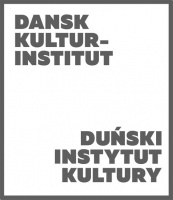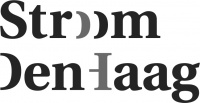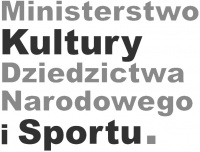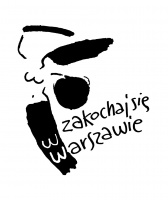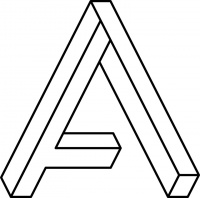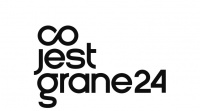THE PENUMBRAL AGE
Art in the Time of Planetary Change
Curators: Sebastian Cichocki, Jagna LewandowskaAnna & Lawrence Halprin, „Driftwood Village—Community,” Sea Ranch, California
Courtesy of Lawrence Halprin Collection, The Architectural Archives, University of Pennsylvania.The Exhibition
The Museum of Modern Art in Warsaw invites to the exhibition “The Penumbral Age. Art in the Time of Planetary Change”, where we present artistic works from the last five decades, based on observations and visualizations of the changes underway on planet Earth. It provides a space for discussion on “managing the irreversible” and new forms of solidarity, empathy and togetherness in the face of the climate crisis.
We live in a time of planetary change affecting each and every one of us. Climate change influences every sphere of life, including thinking about art: the systems of its production and distribution, its social function and its relation to other disciplines, especially science.
Audio introduction to the exhibition. Voice: Meagan Down
Аудіо впровадження до вистави „Вік півтіні. Мистецтво в часи планетарної зміни” українською мовою. Голос: Тарас Гембік / Taras Hembik
The map-helper was created to facilitate movement in the exhibition space. With it, you can easily read the meanings of artistic works. There is no description of everything on the map. Instead, there are some questions that help in the independent reception of works.
Vija Celmins, „Untitled (Ocean with Cross #1)”, 2005, paper, silkscreen print.
Courtesy of the artist and Zuzāns Collection.New ways to see the world
The title of the exhibition is drawn from the book The Collapse of Western Civilization: A View from the Future by Naomi Oreskes and Erik M. Conway (2014), where the protagonists from the future date the “period of the penumbra” from the “shadow of anti-intellectualism that fell over the once-Enlightened techno-scientific nations of the Western world during the second half of the twentieth century, preventing them from acting on the scientific knowledge available at the time” and leading to tragedy. We are witnesses to this process: scientific findings have ceased to be regarded as dispositive and do not persuade people to act.
“Science becomes belief. Belief becomes science. Everything becomes nothing. Nothing becomes everything. All can believe and disbelieve all. We all can know everything and know nothing. Everyone lives as an expert on every subject"
Ibram X. Kendi
as the American writer and historian Ibram X. Kendi wrote in The Atlantic, analysing scepticism about climate change or outright rejection of the threat (climate denialism).Observations by artists are akin to those of scientists, but they typically do not confront viewers with an excess of numbers, soaring bar graphs, or “pornographic” images of poverty and devastation. Art has “strange tools” (Alva Noë, 2015) at its disposal, which we can use to discern “wonders in the heavens and signs on the earth.” When ordinary tools of dialogue and persuasion fail, artists enable an “imaginative leap” by working on the emotions, confronting the incomprehensible and the unknown. As the theoretician of visual culture Nicholas Mirzoeff puts it:
we must “unsee” how the past “has taught us to see the world, and begin to imagine a different way to be with what used to be called nature.
Global art for a changing planet
The “Penumbral Age. Art in the Time of Planetary Change” spans five decades, and highlights the strengthening of environmental reflections in the art of the late 1960s and early 1970s as well as the second decade of the 21st century.
The first period is linked with intensification of pacifist, feminist and anti-racist movements and the formation of the contemporary ecological movement. At the same time new artistic phenomena arose, such as conceptualism, anti-form, land art and earth art. While introducing “geological” thinking about art, artists used impermanent organic materials or sought to entirely dematerialize the work of art.
For us, land art is much more than a stream of Western art emblematic of the late 1960s and early 1970s. Following the thought of the Pakistani artist and activist Rasheed Araeen, drawing from his “ecoaesthetics” agenda, we seek “global art for a changing planet.” Actions connected with the “canonization” of land art, such as Richard Long’s Throwing a Stone around MacGillycuddy’s Reeks, in which the artist followed a stone he tossed before him, the “terraforming” plans of Robert Morris, or Gerry Schum’s television programme (an example of the use of new media to expose audiences to “organic” art practised in deserts or forests), are accompanied in this exhibition by works from the 21st century, employing ecological education (Futurefarmers, Ines Doujak, the Center for Land Use Interpretation), protest (Suzanne Husky, Akira Tsuboi), and involving spirituality and esoterics (Shana Moulton and Nick Hallett, Teresa Murak, Czekalska and Golec).
Ice Stupa in Ladakh
photo: Sonam Wangchuk, 2015Solidarity and Care in the Museum
The field of interest of artists sensitive to environmental change extends to such issues as the Anthropocene, the Capitalocene, the Chthulucene, climate debt, climate denialism, ecocide, the end of nature, fossil capitalism, geoengineering, irreversibility, the New Pangea, post- anthropocentrism, the sixth mass extinction, and terraforming.
All of this is the context for land art, which in this sense is not confined to any one medium, material, or geographical region. It may include initiatives that do not operate under the banner of art. One such example would be the ice stupas in Ladakh, India—artificial glaciers created by engineer Sonam Wangchuk, with a fascinating form and the clearly defined function of supplying water to inhabitants of the desert at the foot of the Himalayas.
“No museums on a dead planet!”
Life in a state of deepening crisis forces us to fundamentally change our thinking about the entire system of social organization and to confront ethical and existential dilemmas (climate migrations and new class conflicts). The world of art, with its museums and rituals for organizing objects and ideas, is no exception (to paraphrase the slogan of the Youth Strike for Climate, “No museums on a dead planet!”) and requires deep systemic transformation. We treat engagement in this discussion as a duty of the museum, and not as just another fashion or stream in art. Countering the calls for “ecological restoration” or the popularity of “art of the Anthropocene,” we stress the permanence of environmental reflection, based on continuity and responsibility.
Art will certainly not protect us against catastrophe, but it can help us arm ourselves with “strange tools” for the work of imagination and empathy. In her memorable manifesto from 1969, Mierle Laderman Ukeles posed the question:
„After the revolution, who’s going to pick up the garbage on Monday morning?”
In works of art from recent decades we not only seek a visualization of processes occurring on our planet, but also discern possible proposals for the future. If ecological catastrophe is already happening (as the residents of the inundated islands of Nauru and Banaba in the Pacific would certainly agree), together let's wonder, will we ever manage to clean up our planetary mess and rebuild our relations with other sentient beings? Will we manage to start over again?
Jonathas de Andrade, „O Peixe”, 16mm film shot transferred to 2K video, 2016
Courtesy of the artist and the Continua Gallery, a photograph by Meghan Marchetti.The Cinema
At the Penumbral Cinema we regularly publish new and historical works related to environmental and ecological reflection. In addition to fragments of films that will be presented during the exhibition at the Museum on the Vistula, we also reach for other film materials collected while working on "The Penumbral Age".
INTERPRT
Earth Law: Site Pacific Ocean, 2018
INTERPRT collects and analyzes evidence in order to prosecute crimes committed in the natural environment, mainly in the Pacific. By using charts, films, interactive maps, exhibitions and lectures, INTERPRT members lobby for ecocide to be a criminal offense under international law. At the same time, they reflect on the need for system changes, such as the responsibility of large fuel companies for climate change.
Guide Book
We present the first issue of the newspaper "The Penumbral Age", which is a guide to The Penumbral Age. Art in the Times of Planetary Change exhibition, still waiting for its opening.
The publication contains a complete catalog of over seventy works of artists participating in the exhibition. The newspaper is designed by Jakub de Barbaro.
Download the publication (PDF)
Publication accompanying the „Repairing Earthquake project” by Nishiko.
The catalogue includes stories of objects found by the artist after the tsunami that hit the shores of Japan in 2011.
Martwa Natura (Nature Morte)
The publication “Martwa Natura” (“Nature Morte”), which consists of interviews with Alice Creischer, Susanne Kriemann and Antje Majewski - the artists participating in the exhibition „THE PENUMBRAL AGE. Art in times of planetary change", was created during the production of a play directed by Agnieszka Jakimiak in Teatr Powszechny im. Zygmunta Hübnera in Warsaw.
During the pandemic times, many ideas and beliefs about art get destroyed. However, some of them may become stronger – like the conviction that art is used by us to create bonds and alliances, networks of understanding and support. Joseph Beuys - an activist and a rebellious artist, a relentless spokesperson for the concern of the natural environment - is a starting point for a journey through these areas of art, that are suspected to have therapeutical properties.
Artists participating in the exhibition
Jonathas de Andrade /
Isabelle Andriessen /
Rasheed Araeen /
Robert Barry /
Kasper Bosmans /
Boyle Family /
Agnieszka Brzeżańska /
Dora Budor /
Vija Celmins /
Center for Land Use Interpretation /
Alice Creischer /
Czekalska + Golec /
Betsy Damon /
Tacita Dean /
Thierry De Cordier /
Agnes Denes /
Ines Doujak /
Jimmie Durham /
Jerzy Fedorowicz /
Hamish Fulton /
Futurefarmers /
Cyprien Gaillard /
Simryn Gill /
Wanda Gołkowska /
Guerrilla Girls /
Małgorzata Gurowska /
Anna & Lawrence Halprin /
Mitsutoshi Hanaga /
Suzanne Husky /
Ice Stupa Project /
INTERPRT /
Anja Kanngieser /
Karrabing Film Collective /
Beom Kim /
Frans Krajcberg /
Susanne Kriemann /
Stefan Krygier /
Katalin Ladik /
Nicolás Lamas /
John Latham /
Richard Long /
Antje Majewski /
Nicholas Mangan /
Krzysztof Maniak /
Qavavau Manumie /
Robert Morris /
Shana Moulton & Nick Hallett /
Teresa Murak /
Peter Nadin & Natsuko Uchino & Aimée Toledano /
Bruce Nauman /
Nishiko /
Isamu Noguchi /
OHO /
Dennis Oppenheim /
Prabhakar Pachpute & Rupali Patil /
Maria Pinińska-Bereś /
Agnieszka Polska /
Ludmiła Popiel /
Joanna Rajkowska /
Jerzy Rosołowicz /
Oscar Santillán /
Gerry Schum /
Bonnie Ora Sherk /
Anna Siekierska /
Rudolf Sikora /
Magdalena Starska /
Irv Teibel /
Akira Tsuboi /
Maria Waśko /
Ryszard Waśko /
Lawrence Weiner /
Magdalena Więcek /
Andrea Zittel
Betsy Damon Archive „Keepers of the Waters (Chengdu and Lhasa)” at Asia Art Archive
Courtesy of the artist.Kolofon
Curators
Sebastian CichockiJagna Lewandowska
Project management
Aleksandra NasiorowskaSzymon Żydek
Exhibition architecture
Kooperative für Darstellungspolitik, BerlinKey visual and graphic design of the exhibition
Jakub de BarbaroAuthors of texts
Sebastian Cichocki, Jakub Depczyński, Jagna Lewandowska, Bogna StefańskaManaging editor
Kacha SzaniawskaTranslation
Klementyna Dec, Joanna Figiel, Agnieszka Modzelewska, Chris Smith, Piotr Urbaniak, Agnes DudekPromotion
Iga Winczakiewicz,Magdalena Zięba-Grodzka



